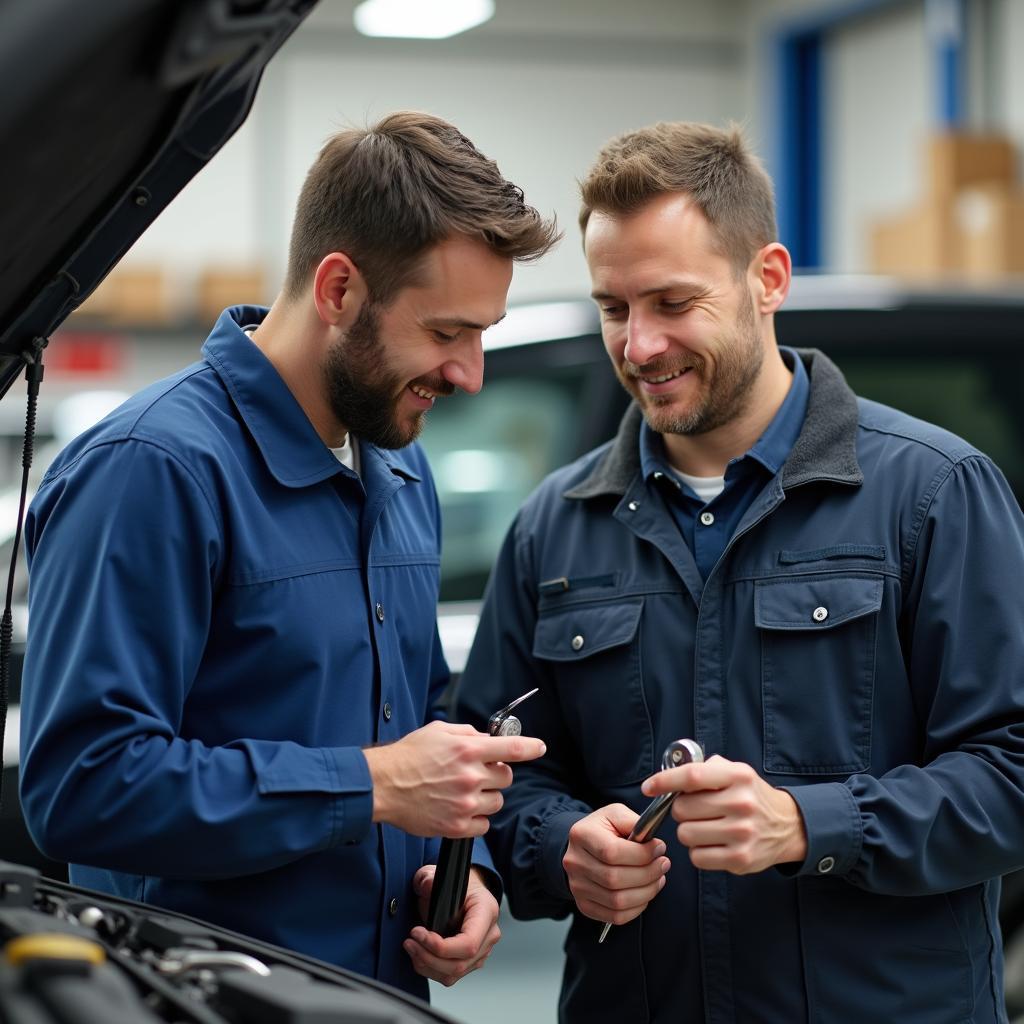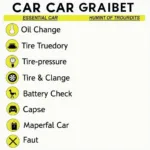Car servicing can seem like a mystery, especially if you’re unfamiliar with the intricacies of your vehicle. However, understanding how car servicing is done empowers you to make informed decisions about your car’s maintenance and ensures its longevity.
What Does Car Servicing Involve?
Car servicing is much more than just an oil change. It’s a comprehensive check-up that addresses various aspects of your vehicle’s health, ensuring it runs smoothly and safely.
Routine Checks and Maintenance
A standard car service includes routine checks and maintenance procedures that are crucial for your car’s well-being.
- Oil Change: This involves replacing used engine oil with fresh lubricant, ensuring smooth engine operation.
- Filter Replacements: Air filters, oil filters, and fuel filters are replaced to prevent contaminants from harming the engine and other vital components.
- Fluid Top-ups: Brake fluid, coolant, power steering fluid, and windshield washer fluid levels are checked and topped up to maintain optimal performance.
- Tire Pressure and Tread Check: Proper tire pressure ensures safe handling and fuel efficiency. Tread depth is inspected to determine if tire replacement is necessary.
In-depth Inspections
Beyond routine checks, car servicing also involves a thorough inspection of your car’s major systems to identify potential issues before they escalate.
- Brake Inspection: Brakes are vital for safety. Mechanics check brake pads, discs, and calipers for wear and tear.
- Suspension Check: A thorough inspection of shocks, struts, and other suspension components helps ensure a smooth and controlled ride.
- Engine Diagnostics: Mechanics use advanced diagnostic tools to identify any underlying engine problems that may not be immediately apparent.
- Electrical System Check: The battery, alternator, starter, and wiring are inspected for proper functioning to prevent electrical issues.
Addressing Specific Concerns
Car servicing also provides an opportunity to address any specific concerns you might have about your vehicle. Whether it’s an unusual noise, a warning light on your dashboard, or a change in your car’s performance, mechanics can diagnose and rectify the issue.
Why is Regular Car Servicing Important?
Regular car servicing is not just an option; it’s an investment in your safety, your wallet, and the lifespan of your vehicle.
- Safety First: Regular servicing ensures that crucial safety features like brakes and tires are in optimal condition, minimizing the risk of accidents.
- Improved Performance: Well-maintained cars perform better, offering smoother handling, better fuel efficiency, and a more enjoyable driving experience.
- Increased Lifespan: Addressing minor issues before they escalate can significantly extend the lifespan of your car, saving you money on costly repairs in the long run.
Finding a Reliable Car Service Provider
Choosing the right car service provider is paramount. Look for a reputable mechanic with experience working on your car’s make and model.
- Ask for Recommendations: Seek recommendations from friends, family, or online reviews to find trustworthy mechanics in your area.
- Check for Certifications: ASE-certified mechanics have demonstrated their competence through rigorous testing, assuring you of their expertise.
- Consider Specialization: If your car requires specialized care, like European car servicing or electric vehicle maintenance, seek out mechanics with the appropriate expertise.
 Mechanic Explaining Car Issue to Customer
Mechanic Explaining Car Issue to Customer
Conclusion
Understanding how car servicing is done allows you to be an informed car owner. By adhering to a regular servicing schedule and choosing a reliable mechanic, you can ensure your car remains safe, performs optimally, and enjoys a longer lifespan. Remember, proactive maintenance is always better than reactive repairs.
